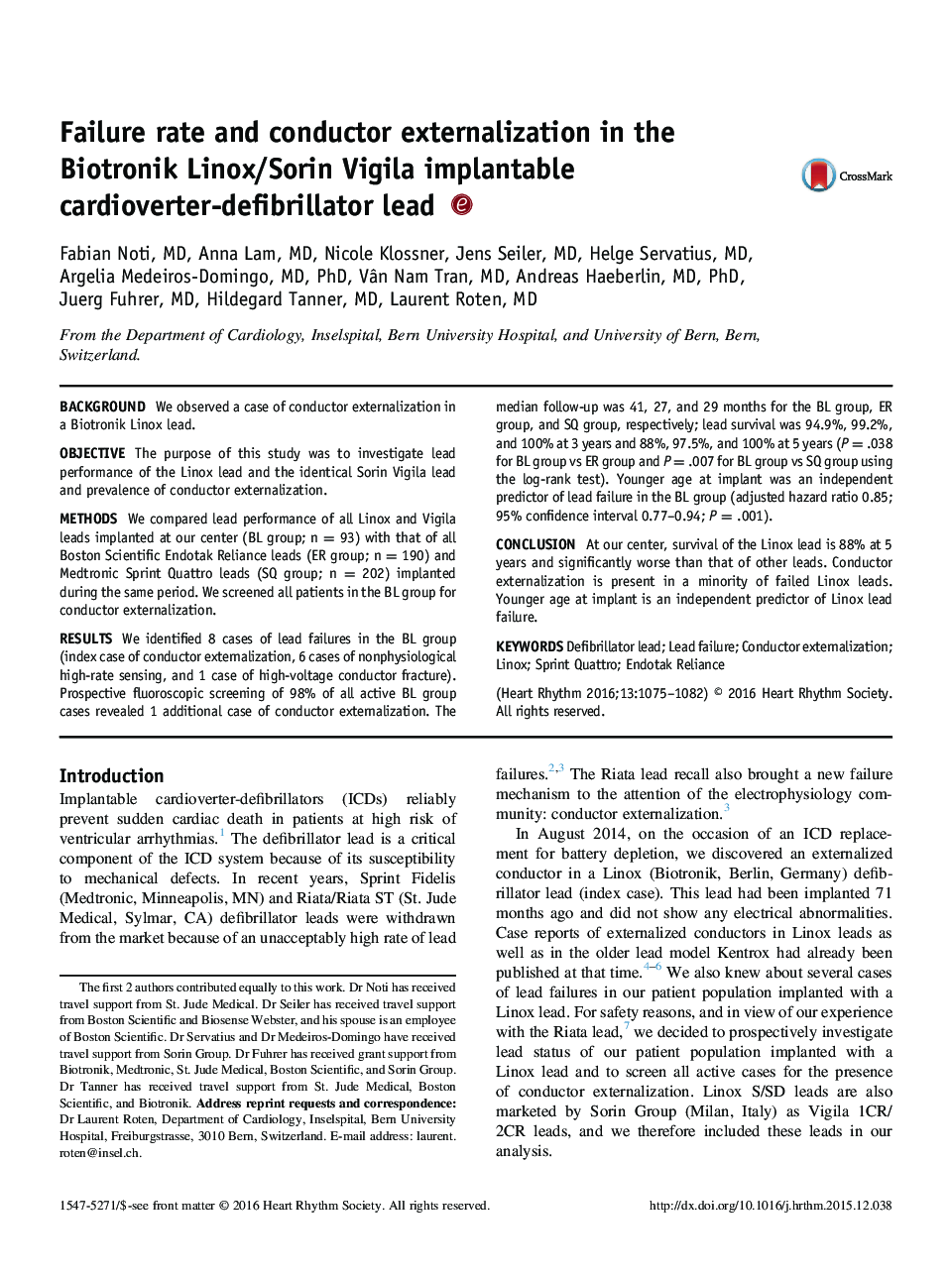| Article ID | Journal | Published Year | Pages | File Type |
|---|---|---|---|---|
| 2921746 | Heart Rhythm | 2016 | 8 Pages |
BackgroundWe observed a case of conductor externalization in a Biotronik Linox lead.ObjectiveThe purpose of this study was to investigate lead performance of the Linox lead and the identical Sorin Vigila lead and prevalence of conductor externalization.MethodsWe compared lead performance of all Linox and Vigila leads implanted at our center (BL group; n = 93) with that of all Boston Scientific Endotak Reliance leads (ER group; n = 190) and Medtronic Sprint Quattro leads (SQ group; n = 202) implanted during the same period. We screened all patients in the BL group for conductor externalization.ResultsWe identified 8 cases of lead failures in the BL group (index case of conductor externalization, 6 cases of nonphysiological high-rate sensing, and 1 case of high-voltage conductor fracture). Prospective fluoroscopic screening of 98% of all active BL group cases revealed 1 additional case of conductor externalization. The median follow-up was 41, 27, and 29 months for the BL group, ER group, and SQ group, respectively; lead survival was 94.9%, 99.2%, and 100% at 3 years and 88%, 97.5%, and 100% at 5 years (P = .038 for BL group vs ER group and P = .007 for BL group vs SQ group using the log-rank test). Younger age at implant was an independent predictor of lead failure in the BL group (adjusted hazard ratio 0.85; 95% confidence interval 0.77–0.94; P = .001).ConclusionAt our center, survival of the Linox lead is 88% at 5 years and significantly worse than that of other leads. Conductor externalization is present in a minority of failed Linox leads. Younger age at implant is an independent predictor of Linox lead failure.
